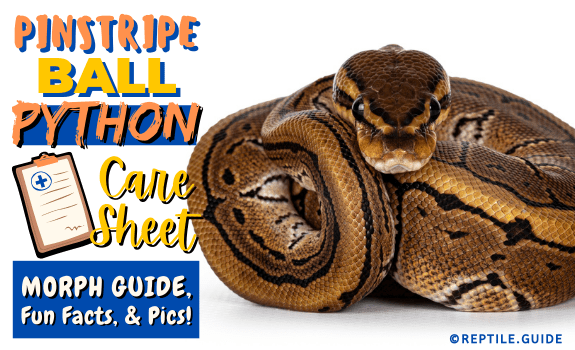The pinstripe ball python morph has much to offer in the way of bright coloration, easy handling, and genetic possibilities.
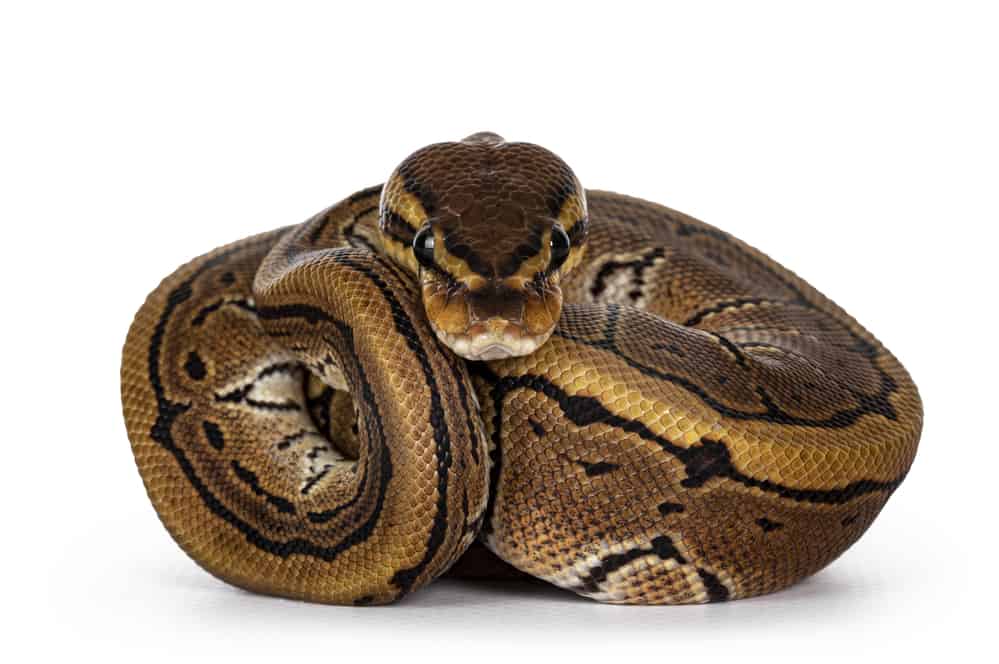
Join us as we delve into the world of pinstripe ball pythons and learn all about their appearance, care, and breeding.
In This Article
In Short
- Pinstripe ball pythons were first produced in 2001 by BHB Enterprises.
- This basic morph features the standard pinstripe patterning, a series of narrow bands down the snake’s body.
- Keeping pinstripe ball pythons is the same as keeping other balls, and you can read more about this in our complete ball python care sheet.
- You can use pinstripes for breeding a wide range of other ball python morphs.
Ball Python Background Information
Ball pythons are medium-sized animals, originating in the tropical and subtropical regions of sub-Saharan Africa.
They prefer living in open forests and grassland with some cover. They also like to live near open water, which they use to cool down in hot weather.
The ball python diet is diverse in the wild, consisting of many small animals. These include rodents, birds, small lizards, and even amphibians like frogs and toads.
This glorious species was first introduced to the pet trade in the 1980s, becoming an almost immediate hit.
Thanks to the ball python’s genetic diversity, breeders produced many colors and patterns, each of which they called a morph.
There are many standard morphs like the wild-type and pinstripe, basic color or pattern variants.
In the 1990s, breeders started producing so-called designer morphs. Designer morphs involve more intense breeding programs.
The rarer a designer morph is, the more expensive it’s likely to be.
What are Pinstripe Ball Pythons?
Pinstripe ball pythons are one of the basic morphs. BHB Enterprises created this type of ball by crossing and outcrossing ball pythons with the desired pattern.
It took some persistence to get a consistent coloration and pinstripe patterning, but the pinstripe ball python was the result.
Breeders have crossed the pinstripe gene with many other morphs to get a wide array of new morphs, which we’ll discuss later.
Pinstripe Ball Python Appearance and Size
Pinstripes are brown and black; just like their wild ancestors. They always have narrow pinstripe patterning.
Expect your ball python to reach a length of four to five feet. Irrespective of the morph, most adult ball pythons are in this size range.
As with other ball python morphs, the pin has a wide head and a well-muscled body. Balls aren’t intimidating-looking by nature, and all have the same basic appearance.
The morph differences are in coloration, eye color, and patterning.
Caring for Your Pinstripe Ball Python Morph
The question on most new keepers’ lips is, how do I care for my pinstripe ball python?
While they look different from one another, the care for most ball python morphs is the same.
Ball pythons need enough humidity, appropriate temperatures, food and water. We discuss all the care needs in detail in our comprehensive ball python care guide.
Here are a few tips before you bring home your new pinstripe ball python:
- Set up your ball python enclosure at least a week before you bring home your new pet—it gives you a chance to check the equipment.
- Ensure that all the necessary equipment and decorations are in place already. Don’t stress your new python with constant movement around it.
- Always have a backup plan for heating your python’s enclosure—you don’t want to get caught without a way to warm the enclosure if there’s a power outage.
Buying Pinstripe Ball Pythons
Pinstripe ball pythons have been on the market for quite some time, which means that they’re easy to find and affordable. Unlike the expensive Scaleless ball python, a Pinstripe is only around $60-70.
Unfortunately, not every breeder is honest, and it’s easy to get duped into buying something other than what you think you are.
This conundrum has led to many fantastic markets which track breeders to ensure that buyers get what they’re paying for.
Large reptile expos and reptile conventions are the best ways to find purebred pinstripe ball pythons and other morphs.
If you’re more of a homebody or you don’t live near a regular reptile convention, it might be worthwhile to look at online markets.
Websites like MorphMarket have an excellent reputation and stock thousands of morphs. The snakes get sent by a deliverer like FedEx Express and arrive within two days.
In rare cases, you may even find a breeder in your area and pick up the snake at their facility. This type of relationship can be helpful as the breeder has the information you don’t have yet.
Want some reliable sources? Check out our curated list of the top 11 best ball python in the US.
Whatever you do, AVOID buying morphs from general listing websites. They stock many different types of adverts and aren’t focused on reptiles.
Buying a morph this way is a risky business because you have no guarantee that you’re getting what you’re paying for.
Pinstripe Ball Python Breeding
While breeding ball pythons is not as difficult as breeding some other types of snakes, it’s still NOT an activity for beginner keepers.
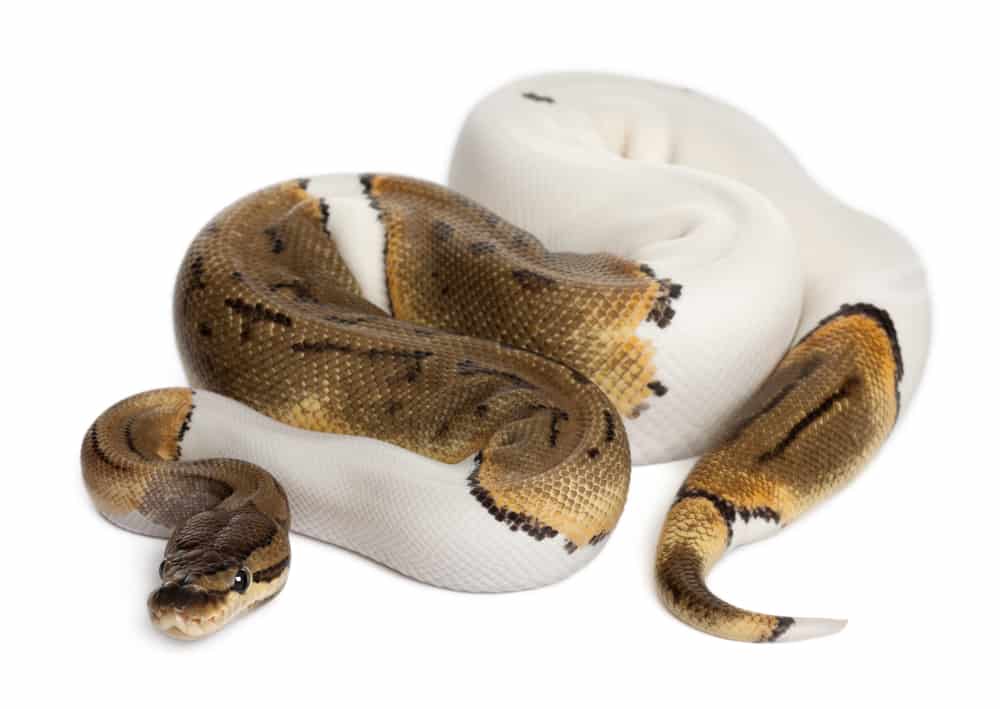
We’ll discuss the ins and outs of breeding ball pythons in detail in another article.
For experienced snake owners, breeding a pinstripe ball python can be a lot of fun.
The pinstripe gene is dominant, so you CAN cross it with other dominant genes to create new and exciting morphs. We’ll have a look at a few of those in the following sections.
If you want to breed balls, you’ll be happy to know that pinstripe balls aren’t prone to genetic abnormalities like kinking or head wobbles.
Pastel Pinstripe Ball Python
The pastel pinstripe ball python is a cross between a pastel and a pinstripe. It has the beautiful colors of the pastels, with the patterning of a pinstripe.
If you are in love with the pastel color, click here to get to know the lovely lavender albino ball python.
Albino Pinstripe Ball Python
The albino pinstripe ball python is a cross of two pythons with the recessive albino genes, one of which also has the dominant pinstripe gene.
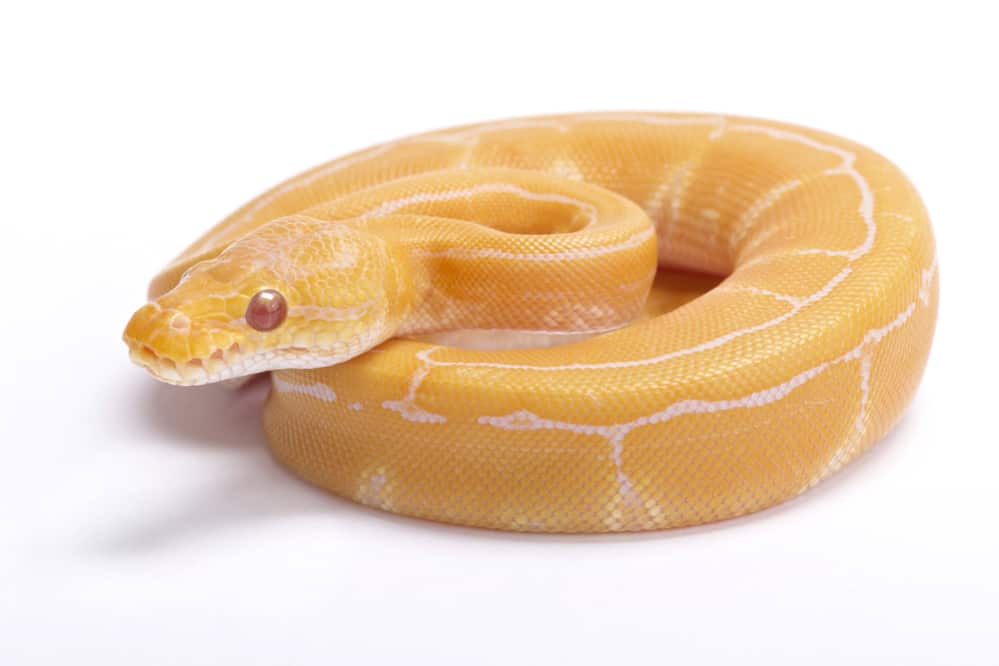
Albino pinstripes have a typical lack of coloration but with a pinstripe pattern.
Super Pinstripe Ball Python
The super pinstripe ball python looks no different from a traditional pinstripe.
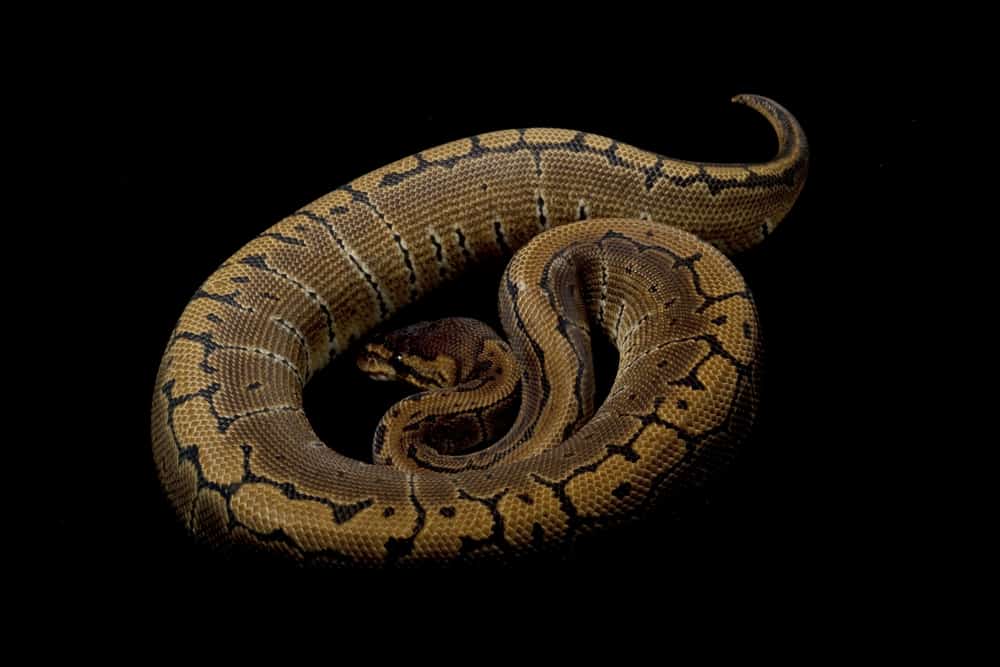
The advantage of a super pinstripe (a.k.a. “a cross of two pinstripes”) is that it always contributes the pinstripe gene when you breed it.
Super pinstripes are invaluable in morph creation.
Pinstripe Spider Ball Python
The pinstripe spider ball python, also known as the GHI Spinner, deserves a special mention. It’s beautiful, combining the spider patterning with that of a pinstripe.
It’s also prone to genetic conditions like kinking, which are common with the spider. So if you plan on breeding your pinstripe, we DON’T recommend doing a spider cross.
Our article on the spider ball python covers some of these genetic abnormalities in detail and the challenges of owning a snake that has them.
As a result, we also don’t recommend buying a pinstripe spider since genetic abnormalities can be hard to deal with.
Now that you’ve learned all about Pin balls, are you planning on getting one? Let us know in the comments below.
